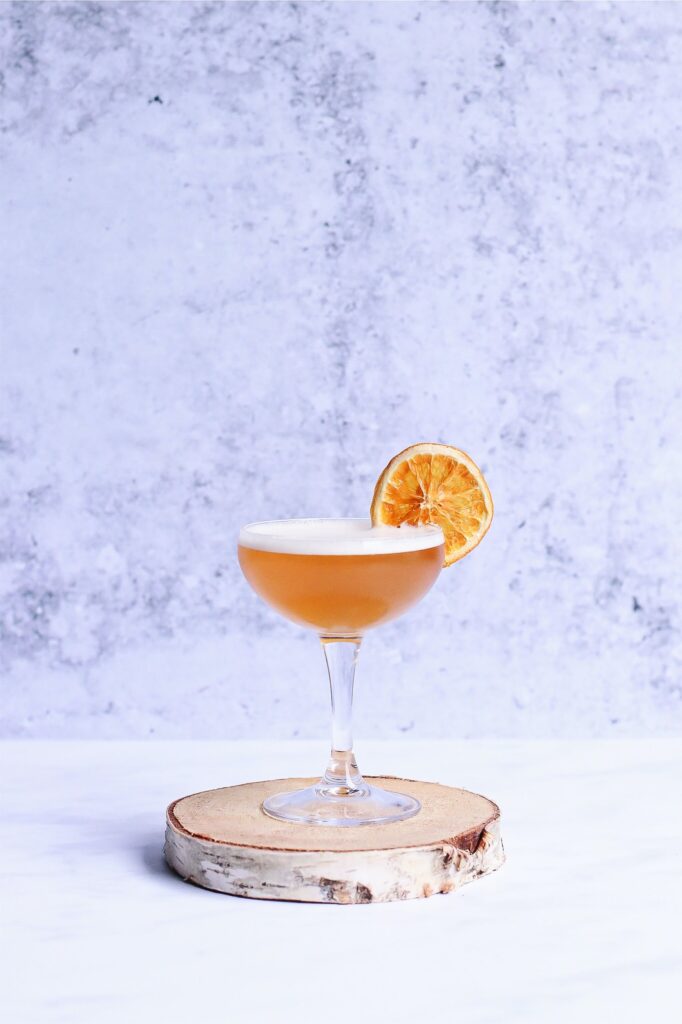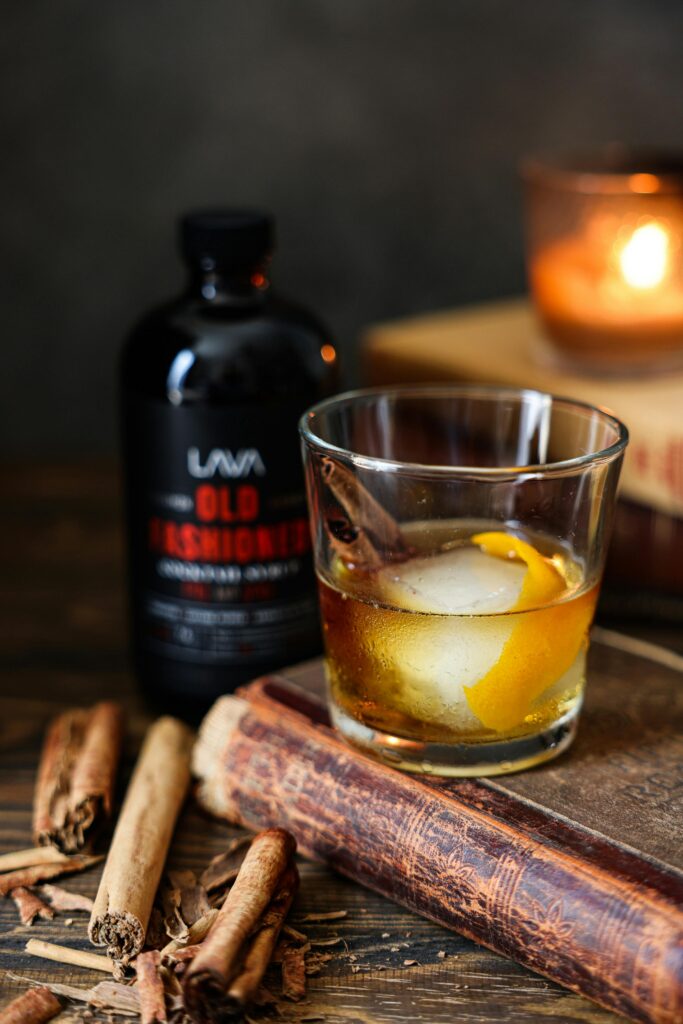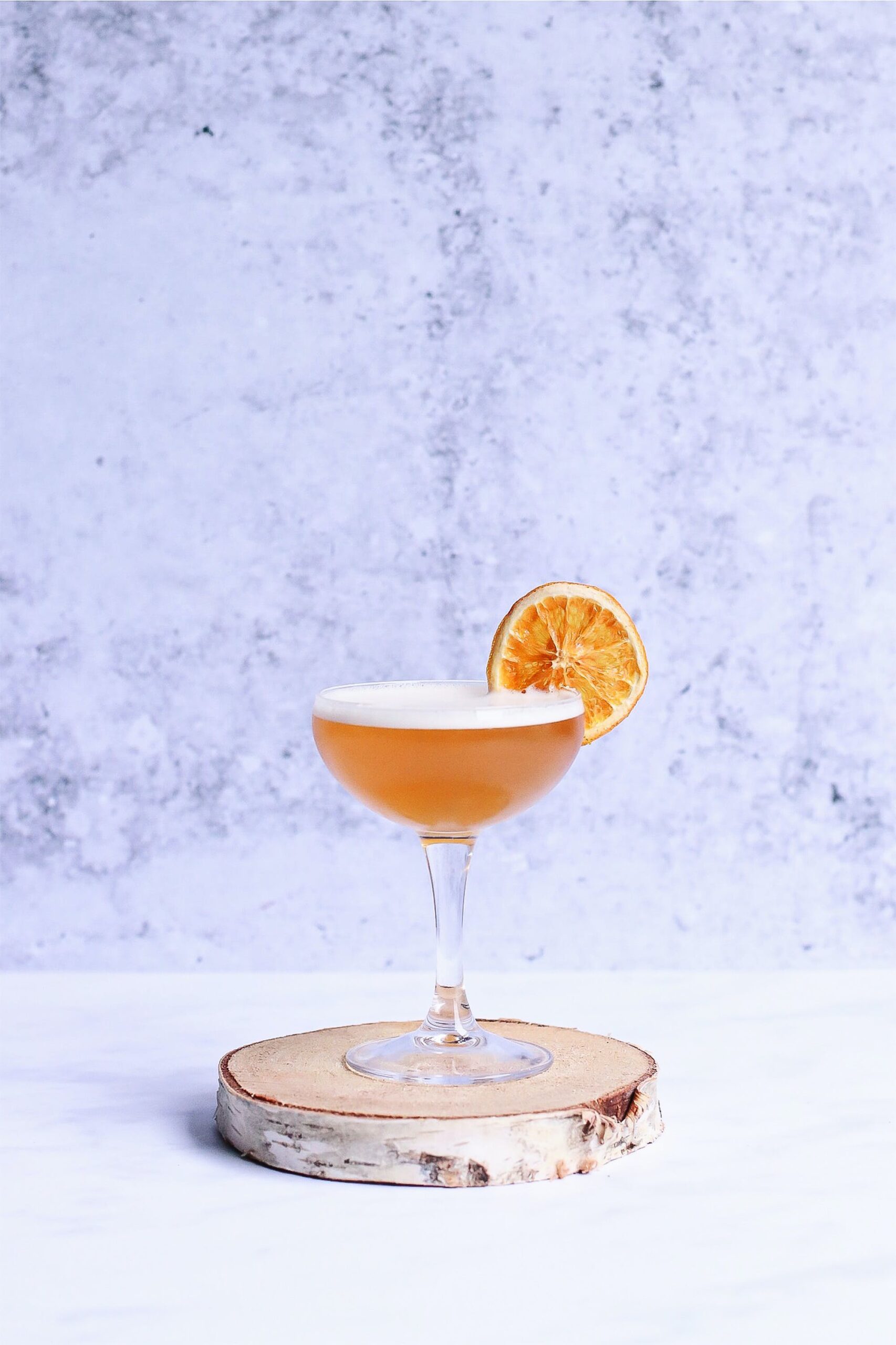Whether you’re new to the world of whiskey or looking to brush up on your knowledge, “Bourbon Basics: A Crash Course on America’s Whiskey” is the perfect article for you. In this comprehensive guide, you will embark on a journey through the fascinating history and intriguing process behind America’s favorite spirit. From the strict guidelines that define bourbon to the unique flavors that enchant the palate, this beginner’s guide is designed to equip you with all the knowledge you need to navigate the world of bourbon with confidence. So grab a glass, sit back, and prepare to discover the wonders of America’s whiskey.
What is Bourbon?
Bourbon, often referred to as America’s whiskey, is a type of distilled spirit that holds a firm place in the hearts and glasses of many. It boasts a rich history, distinct characteristics, and a loyal following. To truly appreciate bourbon, it’s important to understand its legal definition, origin, and key ingredients.
The Legal Definition of Bourbon
According to the Federal Standards of Identity for Distilled Spirits, bourbon must meet several criteria to earn its official status. Firstly, it must be made in the United States. Additionally, the mash bill (the mix of grains used in the distillation process) must contain at least 51% corn. Moreover, bourbon must be distilled to no more than 160 proof (80% alcohol by volume) and aged in new, charred oak barrels. Finally, it must be bottled at a minimum of 80 proof (40% alcohol by volume). Adhering to these guidelines ensures that a spirit can be rightfully called bourbon.
The Origin of Bourbon
Bourbon’s roots can be traced back to the late 18th century in what is now known as Kentucky. It is believed that early American settlers, inspired by the techniques of European distillers, began experimenting with corn-based spirits. The resulting product, known as bourbon, quickly gained popularity due to its smooth flavor profile and availability of corn in the region. Although the exact origins of its name are unclear, many theories suggest that it was named after Bourbon County, Kentucky.
The Key Ingredients of Bourbon
Bourbon’s irresistible flavor comes from its carefully selected ingredients. The main component of any bourbon is corn, which provides a sweet and slightly rich taste. Typically, corn makes up the majority of the mash bill, followed by smaller amounts of other grains such as barley, rye, or wheat. These secondary grains add depth and complexity to the final product. Yeast is also a crucial ingredient, as it kicks off the fermentation process, converting the sugars in the mash into alcohol. Water, of course, plays a vital role as well, with its quality affecting the overall flavor and mouthfeel of the bourbon.
The Distillation Process
The creation of bourbon involves a series of carefully orchestrated steps, each contributing to the production of a distinctive and well-balanced spirit. Understanding the different stages of the distillation process sheds light on the craftsmanship behind every bottle of bourbon.
Mashing
Mashing is the initial step in bourbon production and involves mixing grains with hot water. The grains release starches, which are then converted into fermentable sugars. This process, known as saccharification, is achieved through the use of natural enzymes present in the mash or by the addition of external enzymes. The resulting mixture is referred to as the mash.
Fermentation
Once the mash has been prepared, yeast is introduced to begin the fermentation process. Yeast consumes the sugars in the mash and produces alcohol as a byproduct. The fermentation takes place in large tanks, known as fermenters, typically made of stainless steel or wood. During this stage, the yeast also produces various flavor compounds, further shaping the character of the bourbon.
Distillation
Distillation is the heart of the bourbon-making process. The mash is heated to separate its alcohol from other compounds through a process called vaporization. This vapor is then condensed back into a liquid, creating a distillate with a higher alcohol concentration. Distillation typically involves two rounds: a first distillation in pot stills or column stills, which results in the creation of a raw spirit, and a second distillation, known as “doubling,” to refine the flavors and increase the alcohol content.
Aging
After distillation, the raw bourbon is placed in new, charred oak barrels for aging. The aging process is crucial, as it allows the flavors to meld together and mature over time. The bourbon picks up distinct characteristics from the wood, such as vanillin and tannins, which contribute to its complexity and smoothness. The minimum aging requirement for bourbon is two years, although many bourbons are aged significantly longer to achieve desired flavors. During aging, the bourbon also undergoes oxidation and evaporation, known as the “angel’s share,” further concentrating its flavors.

Different Types of Bourbons
Bourbon is a versatile spirit, with different types catering to various preferences and tastes. Understanding the distinctions between each type allows enthusiasts to explore a wide range of flavors and styles.
Straight Bourbon
Straight bourbon is the classic representation of the spirit. It is aged for a minimum of two years, untouched by any additive, and must meet all the requirements specified by the legal definition of bourbon. This type of bourbon offers a balanced flavor profile and often serves as a benchmark for other variants.
Bottled in Bond Bourbon
Bottled in Bond bourbon is a designation that ensures a higher standard of quality and authenticity. To earn this label, the bourbon must be the product of a single distillation season, made by a single distiller at a single distillery, aged for at least four years, and bottled at 100 proof (50% alcohol by volume). This type of bourbon offers a robust and full-bodied experience, often with a higher concentration of flavors.
Small Batch Bourbon
Small batch bourbon is crafted with a limited number of barrels, usually selected from a small portion of a distillery’s inventory. This allows for greater control over the blending process and results in a more distinctive and refined product. Small batch bourbons often showcase unique flavor profiles, highlighting the craftsmanship and attention to detail put into their creation.
Single Barrel Bourbon
Single barrel bourbon is precisely what its name implies: bourbon that has been matured in a single barrel. Each barrel imparts its own unique characteristics, so each bottle from a single barrel will have its own flavor profile. This type of bourbon offers a more personalized experience and is often sought after by collectors and connoisseurs.
Blended Bourbon
Blended bourbon combines multiple aged bourbons, each with its own flavor profile, to create a harmonious and well-balanced final product. Blending allows for greater consistency and complexity, as distillers can utilize the strengths of different barrels to achieve desired flavors. Blended bourbons often offer a smooth and approachable taste, making them popular choices for both newcomers and seasoned bourbon enthusiasts.
Bourbon vs. Whiskey
The terms bourbon and whiskey are often used interchangeably, leading to confusion among those new to the world of spirits. However, there are distinct differences between the two, both in terms of production and taste.
The Distinction Between Bourbon and Whiskey
Whiskey is a broader category that encompasses various types, including bourbon. While all bourbons are whiskeys, not all whiskeys can be classified as bourbon. The key differentiating factor is the production process and the specific requirements outlined in the legal definition of bourbon.
To be considered bourbon, a whiskey must meet the criteria mentioned earlier, such as being produced in the United States with a mash bill containing at least 51% corn and aged in new, charred oak barrels. Whiskey, on the other hand, is a more general term that encompasses a wide range of spirits produced worldwide, with different regulations and guidelines depending on the country of origin.
The Characteristics of Bourbon That Set it Apart
Bourbon’s defining characteristics lie in its flavor profile, which sets it apart from other types of whiskey. It often exhibits a rich, sweet, and full-bodied taste, thanks to the high corn content in its mash bill. The charred oak barrels used for aging infuse the bourbon with notes of caramel, vanilla, and spice, further enhancing its complexity.
Additionally, bourbon tends to have a smooth finish and a well-rounded mouthfeel. Its aging process contributes to the mellowing and integration of flavors, making it a popular choice for sipping neat or enjoying in classic cocktails. The distinct combination of its grain composition, aging process, and production standards make bourbon a unique spirit with loyal followers worldwide.

Tasting and Appreciating Bourbon
To fully appreciate the nuances and complexity of bourbon, it’s important to approach each sip with mindfulness and a sense of curiosity. By following these guidelines, you can enhance your tasting experience and develop your palate.
The Proper Way to Taste Bourbon
When tasting bourbon, it’s essential to engage all your senses. Begin by pouring a small amount of bourbon into a tulip-shaped glass to concentrate the aromas. Observe its appearance, noting its color and clarity. Swirl the glass gently to release the bourbon’s aromas before bringing it to your nose.
The Importance of Nosing
The aroma, or nose, plays a vital role in the tasting experience. Take a moment to inhale the bouquet of the bourbon, identifying different scents such as caramel, vanilla, oak, or spices. This initial assessment can give you a sense of the flavors that will follow upon tasting.
Understanding Flavor Profiles
Once you have appreciated the aroma, take a small sip of the bourbon and allow it to coat your palate. Pay attention to the flavors that emerge, such as sweetness, spiciness, or hints of fruit. Notice the balance between these flavors and any lingering aftertaste. Bourbon can have a wide range of flavor profiles, ranging from caramel and toffee to cinnamon and nutmeg.
Pairing Bourbon with Food
Pairing bourbon with complementary foods can enhance the overall tasting experience. The richness and complexity of bourbon make it a versatile spirit that can be enjoyed with various dishes. Consider pairing a bold, high-proof bourbon with a charcuterie board or a decadent chocolate dessert. Alternatively, a lighter, more delicate bourbon may pair well with grilled seafood or creamy cheeses. Experimentation and personal preference are key to discovering your ideal bourbon and food pairing.
Popular Bourbon Brands
The world of bourbon is filled with a plethora of distilleries, each with its own unique offerings. While the choices may seem overwhelming, there are several popular brands that have stood the test of time and earned a respected place among bourbon enthusiasts. Here are five notable bourbon brands worth exploring:
Jim Beam
Jim Beam, one of the most recognizable names in the bourbon industry, has been crafting bourbon for over two centuries. Known for their commitment to quality and tradition, Jim Beam offers a range of bourbons suitable for every palate. From their flagship Jim Beam Original to their premium small batch releases, their portfolio caters to both newcomers and seasoned bourbon lovers.
Maker’s Mark
Maker’s Mark is renowned for its iconic red wax-dipped bottles and its dedication to producing handcrafted bourbon. With a focus on small-batch production and using traditional techniques, Maker’s Mark offers a smooth and approachable bourbon with hints of caramel and vanilla. Their commitment to consistency and high-quality standards has made them a favorite among bourbon connoisseurs worldwide.
Wild Turkey
Wild Turkey is synonymous with bold and robust bourbons. Known for their higher-proof offerings, such as Wild Turkey 101, their bourbons deliver a punch of flavor and complexity. With a balance of sweet and spicy notes, Wild Turkey appeals to those who prefer a more robust and intense tasting experience.
Woodford Reserve
Woodford Reserve embodies the art of bourbon-making, combining tradition with innovation. Made in small batches, their bourbons are known for their rich and full-bodied character. With flavors of dried fruit, caramel, and toasted oak, Woodford Reserve offers a sophisticated and nuanced sipping experience.
Bulleit Bourbon
Bulleit Bourbon stands out for its high rye content, which gives its bourbons a distinct spicy kick. Bold and flavorful, Bulleit bourbon has gained popularity for its versatility in cocktails, making it a go-to choice for mixologists and whiskey enthusiasts alike. With its signature high-rye flavor profile, Bulleit Bourbon makes its presence known in both classic and contemporary bourbon cocktails.

Bourbon Cocktails
While bourbon is undeniably enjoyable on its own, it also shines in a variety of cocktails. Whether you prefer the timeless classics or more adventurous concoctions, there is a bourbon-based cocktail to suit every preference. Here are a few beloved bourbon cocktails to whet your palate:
The Classic Old Fashioned
Considered the quintessential bourbon cocktail, the Old Fashioned is a timeless choice for any bourbon enthusiast. Combining bourbon, sugar, bitters, and a twist of citrus peel, this cocktail highlights the depth and complexity of the bourbon while allowing its flavors to shine.
The Refreshing Mint Julep
The Mint Julep is synonymous with the Kentucky Derby, where it has been the traditional drink for over a century. With its combination of bourbon, fresh mint, sugar, and crushed ice, this cocktail offers a refreshing and aromatic experience, perfectly suited for warm weather and outdoor gatherings.
The Spicy Kentucky Mule
For those who prefer a bourbon cocktail with a kick, the Kentucky Mule is an excellent choice. This variation of the classic Moscow Mule replaces vodka with bourbon, resulting in a delightful blend of ginger beer, lime juice, and the distinct flavors of bourbon. The spicy and tangy notes of this cocktail create a truly satisfying sipping experience.
The Sophisticated Manhattan
The Manhattan is a cocktail that exudes elegance and sophistication. Comprising bourbon, vermouth, and bitters, this classic drink offers a harmonious balance of sweet and bitter flavors. Garnished with a cherry, the Manhattan is an excellent choice for those seeking a smooth and refined bourbon cocktail.
Bourbon Collecting and Investing
Bourbon collecting has surged in popularity over recent years, with enthusiasts seeking out limited editions and rare releases. Collecting bourbon allows individuals to appreciate the craftsmanship and variety within the bourbon world. Here are some tips for starting a bourbon collection:
The Rise of Bourbon Collecting
Bourbon collecting has expanded beyond individuals who simply enjoy drinking the spirit. The limited availability of certain bottles, combined with the increased interest in bourbon, has given rise to a vibrant collecting community. For some collectors, it is the thrill of seeking out rare finds, while for others, it is a form of investment.
Tips for Starting a Bourbon Collection
Starting a bourbon collection can be an exciting journey. Here are a few tips to help you get started:
- Research: Familiarize yourself with the different bourbon brands, their offerings, and the release patterns. This knowledge will help you make informed decisions when adding bottles to your collection.
- Set a budget: Determine your spending limits and create a budget that accounts for both affordable everyday bottles and occasional splurges on limited editions.
- Build relationships: Get to know your local liquor stores and establish relationships with store owners or managers. They may have access to limited releases or be able to notify you of upcoming releases.
- Attend tastings and events: Tastings and events offer opportunities to try a variety of bourbons and gain insight into different brands and expressions. Additionally, they can provide networking opportunities within the bourbon community.
- Store your collection properly: Invest in a suitable storage solution for your bourbons to ensure they are protected from light, temperature fluctuations, and excessive humidity. This will help maintain the quality and value of your bottles.
Investing in Limited Edition Bourbons
For those interested in the investment potential of bourbon, limited edition releases can offer significant returns. Limited edition bourbons often fetch higher prices in the secondary market due to their rarity and desirability. However, investing in bourbon requires careful consideration, as it is subject to market fluctuations and trends. It is essential to consult with experts in the field or seek professional advice to make informed investment decisions.
Bourbon Tourism
Bourbon is not just a spirit to be enjoyed in a glass; it is also an experience to be savored. Bourbon tourism has gained popularity as enthusiasts and curious travelers seek to explore the rich history and craftsmanship behind the spirit. Here are some bourbon tourism highlights:
Visiting Bourbon Distilleries
A visit to a bourbon distillery offers a behind-the-scenes look at the bourbon-making process and an opportunity to learn from the experts. Many distilleries, especially in Kentucky, open their doors to the public, allowing visitors to witness the mashing, fermentation, distillation, and aging firsthand. Guided tours often delve into the history, traditions, and unique techniques employed by each distillery, making for an educational and immersive experience.
The Kentucky Bourbon Trail
The Kentucky Bourbon Trail, a popular destination for bourbon enthusiasts, showcases the heart of bourbon country. Comprising a collection of distilleries in the Bluegrass State, the trail introduces visitors to the birthplace and epicenter of bourbon production. Whether exploring iconic distilleries like Jim Beam or delving into the family-owned operations, the Kentucky Bourbon Trail offers a comprehensive bourbon experience that allows visitors to experience the heritage and craftsmanship that goes into each bottle.
Other Notable Bourbon Destinations
While Kentucky may be the undisputed home of bourbon, other regions throughout the United States have also made their mark on the bourbon landscape. From Tennessee’s famous Jack Daniel’s distillery to the emerging bourbon scene in New York, several destinations offer their unique take on bourbon production and tasting experiences. Exploring these diverse locations provides a broader understanding of the diverse tapestry that makes up America’s whiskey culture.
Bourbon in Pop Culture
Bourbon’s influence extends far beyond the bottles lining the shelves. It has firmly established itself in various forms of popular culture, leaving its mark on movies, television, literature, and American identity itself.
Bourbon in Movies and Television
Bourbon has become a staple in cinematic storytelling, often symbolizing authenticity, sophistication, and even rebellion. Countless movies and TV shows feature characters reaching for a glass of bourbon to celebrate, commiserate, or partake in deep conversations. From classic films like “Casablanca,” where Humphrey Bogart famously orders a classic bourbon cocktail, to contemporary series like “Mad Men,” where bourbon serves as a reflection of the characters’ inner struggles and desires, bourbon has become a visual shorthand for character development and storytelling.
The Association of Bourbon with American Culture
Bourbon has become intricately woven into the fabric of American culture. It has strong ties to American history, having survived Prohibition and playing a significant role in the economic development of regions like Kentucky. Bourbon has become a symbol of American craftsmanship, independence, and tradition. Its association with American culture extends to holidays and celebrations, where it often takes center stage in gatherings and social events.
Bourbon in Literature
Bourbon’s presence is not limited to screens and glasses; it has also found its way into the pages of literature. Writers often use bourbon as a motif to evoke a sense of time, place, and character. Whether it’s the complex protagonist enjoying a solitary glass of bourbon as a moment of contemplation or the writer using bourbon as a metaphor for life’s complexities, literature has embraced bourbon as a powerful tool for storytelling and exploration of the human condition.
In conclusion, bourbon is more than just a whiskey; it is a symbol of American heritage, craftsmanship, and tradition. From its legal definition to the distillation process, appreciation, and collecting, bourbon offers a fascinating journey for enthusiasts and novices alike. Whether sipped neat, enjoyed in cocktails, or explored through bourbon tourism, the breadth and depth of this beloved spirit continue to captivate and inspire. So pour yourself a glass, raise it in a toast, and join the ranks of bourbon aficionados who celebrate the unique flavors and rich culture of America’s whiskey. Cheers!
